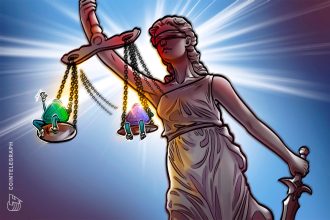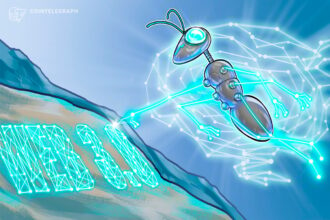Opinion by: Venket Naga, co-founder and CEO of Serenity
The convergence point between cryptocurrencies and the real estate market has transformed significantly recently. What was once considered a notable development – buying property with crypto-backed finance – now represents a baseline occurrence.
Growing integration between Web3 and real-world assets (RWAs) is evident, with substantial potentialities emerging.
Tokenization initiatives, highlighted by examples such as Dubai’s pioneering real estate tokenization project in the MENA region, a landmark $3-billion global RWA tokenization deal, or initial investment explorations, underscore this region’s momentum. These high-profile efforts signify a definitive trajectory for the sector.
This advancement is poised for further growth. Projections suggest that $4 trillion of the real estate market could become tokenized by 2035. As tokenization progresses rapidly, the market dynamics are shifting towards democratization, potentially opening access to diverse types of investors regardless of capital size.
However, an unaddressed but critical question may derail this trajectory: What happens to these assets upon the owner’s demise?
Within conventional property law, inheritance serves as a fundamental pillar, explaining why its principles, if not adapted to blockchain protocols, could create systemic breaks in the RWA sector.
Neglected Challenges in Tokenized Inheritance
The lack of standardized, legally acknowledged succession systems is increasingly becoming a significant risk factor, matching the speed of blockchain-based real estate ownership.
While regulatory frameworks such as the Markets in Crypto-Assets (MiCA) Regulation receive considerable attention, inheritance, as one of property rights’ core tenets, remains surprisingly marginal in current discussions.
The established, court-validated inheritance framework may lack suitability for the tokenized real estate industry, but without a digitized equivalent, heirs risk confrontations involving opaque key custody, jurisdictional ambiguity, or irreversible asset forfeiture.
Although contingency solutions include “cold keys” – a frequently advised method for private key storage – this approach doesn’t fully mitigate every failing scenario.
If keys are misplaced, so too is inheritance access. Alternatives proposed include multi-signature (multisig) schemes or custodial arrangements, yet a fundamental flaw persists: the absence of an integrated, secure, and automated inheritance framework.
As it exists now, inheritance management in Web3 is either insecure or necessitates manual processes, contradicting the inherent principles of decentralization and automation.
Blockchain itself holds the key, through its inherent technologies, suggesting innovation that merges present-day improvements. Potential solutions involve crafting novel mechanisms that integrate familiar concepts with emerging paradigms, possibly creating a “decentralized data survivability protocol” (DeDasP).
A potential DeDasP could stipulate inheritance terms via smart contract functionalities, instigating automated key transfers as designated conditions materialize.
Related: Dubai regulator clarifies real-world asset tokenization rules: Lawyer
One implementation approach could entail segmenting keys into non-fungible tokens (NFTs) among designated successors. Leveraging multi-signature threshold logic could facilitate decryption, thereby establishing an automated and unambiguous inheritance infrastructure.
Concerns arise: “Not your keys, not your inheritance.” If subsequent key access depends entirely on successors potentially losing their NFT shards, this presents a logical risk. Here lies the intersection with the tangible world: wallet access could be rigidly enforced through biometric verification.
By strategically integrating shard technology, NFT application, biometric authentication, and smart contract enforcement to automate survivability, developers could mark a pivotal moment. This could establish a pathway for complex generational wealth transfers within tokenized real estate, definitively outlining digital property rights.
Conclusion
Embedding inheritance mechanisms directly into blockchain architectures transcends technical complexity; it is crucial for RWA market endurance.
Tokenized assets must pass successfully to heirs, avoiding loss due to inadequate foresight, legal uncertainties, or forgotten credentials. For democratization’s promise to hold value, seamless ownership transmission must be guaranteed.
Mitigating asset succession challenges needs equal commitment alongside real estate tokenization’s growth. Absent adequate solutions, the potential disruption from blockchain’s own limitations could impede wider adoption.
Brighter pathways exist, enabled by technology, fostering continuity where digital ownership persists across time.
Opinion by: Venket Naga, co-founder and CEO of Serenity.
This article is for general information purposes and is not intended to be and should not be taken as legal or investment advice. The views, thoughts, and opinions expressed here are the author’s alone and do not necessarily reflect or represent the views and opinions of Cointelegraph.












